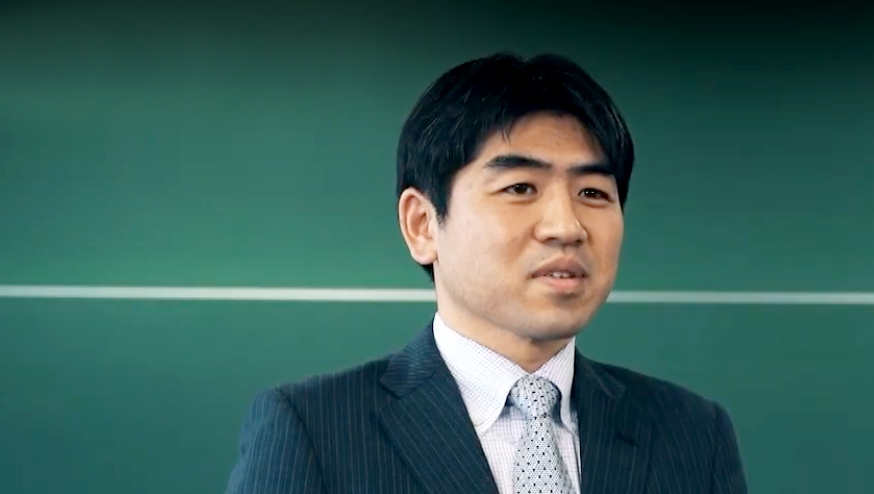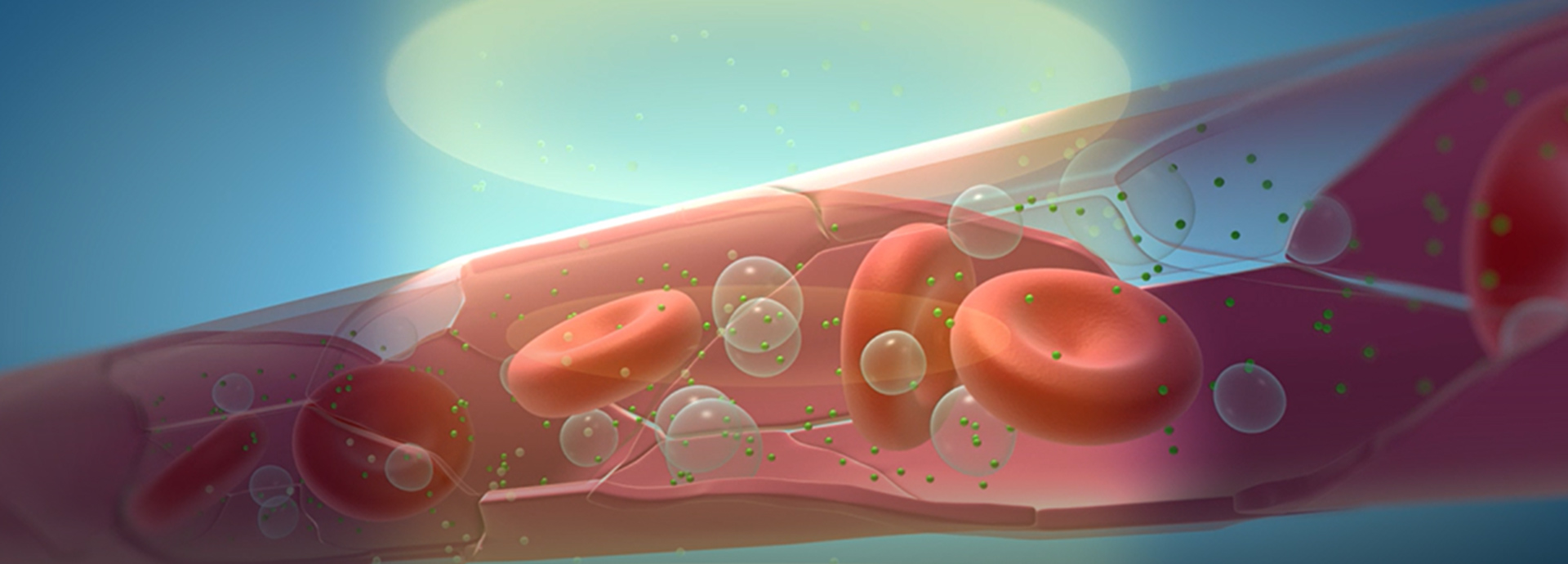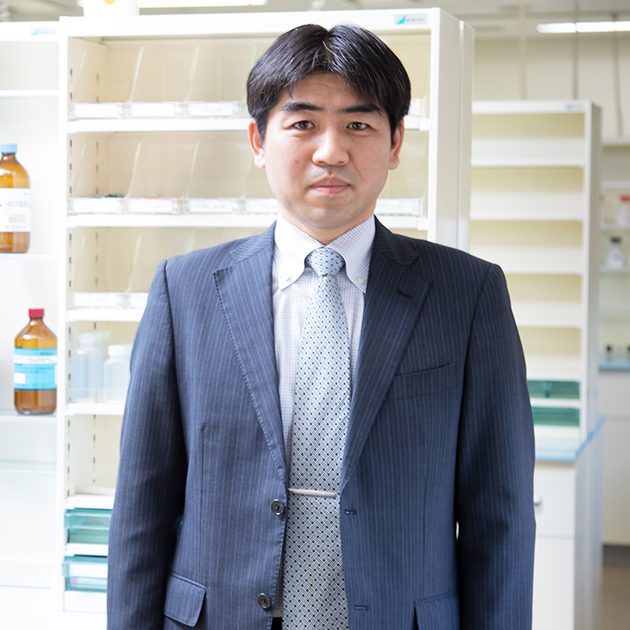赤血球よりも小さい数㎛の気泡(マイクロバブル)に超音波を当てることで、
狙った細胞や組織に集中して薬剤を届けるDDS(ドラッグデリバリーシステム)。
この研究成果が、がん治療や脳・中枢神経系疾患の治療に役立つと期待されている。
マイクロバブルの研究に取り組む鈴木亮教授は、
この小さな気泡にさまざまな機能を付与して新たな可能性を拓こうとしている。
マイクロバブルと超音波で
狙ったところに薬剤をデリバリー
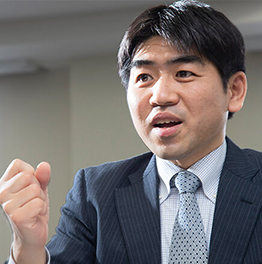
病気の治療や予防、健康状態の維持にとって薬は欠かせない存在だが、使い方によっては毒にもなる。例えば、抗がん剤はがん細胞だけではなく正常な細胞も傷つけてしまうためにさまざまな副作用が知られている。そのような副作用を最小限にして、薬の効果を最大限発揮するには、がん細胞だけに必要な量の薬物を届ける必要がある。
帝京大学薬学部薬物送達学研究室の鈴木亮教授は、マイクロバブルという微小気泡を利用して、狙った場所に薬物を届ける「DDS(ドラッグデリバリーシステム)」を研究している。研究対象のマイクロバブルは直径1㎛(0.001㎜)~3㎛、血液中の赤血球より小さい。このマイクロバブルが血液中を流れている状態で超音波を当てると、血中のマイクロバブルが振動し、マイクロバブルがある血管内部の血流を画像化できる。
「マイクロバブルの振動によりそれまで見えなかった血流が見えるようになるので、心臓の血流異常やがん細胞がつくり出した微小な血流(血管新生)を発見・診断することができます。私たちはその技術を生かして、必要なときに、必要な量の薬物を、必要な場所で作用させるようなDDSを開発しようとしています」(鈴木教授)
血液脳関門オープニング可能な技術
血中のマイクロバブルに超音波を当てると、マイクロバブルの収縮や膨張(振動)が起こる。また、徐々に超音波のエネルギーを高めていくとマイクロバブルが圧壊する。このようなマイクロバブルの振動や圧壊による機械的な作用が血管内で誘導されると、超音波を照射したエリアの血管壁が押し広げられ、血管に小さなすき間が空く。これにより、血管内を流れている薬物が血管外の細胞や組織に漏れ出る。この仕組みが、必要な細胞・組織にピンポイントで薬を届けるDDSとなる。
がん細胞に薬を届けるだけではなく
免疫細胞を活性化する効果も
医療用に開発されたマイクロバブルは、疎水性のガスが脂質などの外殻で覆われている。血流の造影剤として使うのであればこの状態で問題ないが、DDSで使うには血中での安定性が悪く、数分で消えてしまうというデメリットがあった。より高い機能が求められるDDSでの使用を考えてきた鈴木教授らは、マイクロバブルの外殻成分に着目。バブル表面を特定の場所に集まりやすくなるターゲット分子で修飾するなど、目的に応じた機能を持たせることに成功している。
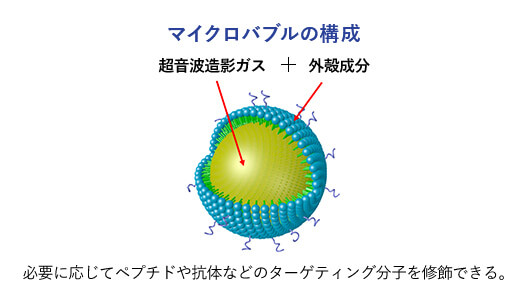
ターゲットのひとつは、がん組織だ。がん組織は正常組織よりも新生血管が多いという特徴があるが、正常組織の中でも血管が豊富で増殖が早い毛根、腸管や骨髄などに影響しやすく、脱毛、嘔吐・下痢や血球減少などの副作用を生じることになってしまう。また、がんの中でも血管量が少なく薬物を届けにくい膵臓がん、血管量は多くても脳や肺などに転移しやすい乳がんでは、腫瘍がある部分にピンポイントでたくさんの抗がん剤を届けなければならない。
そこで鈴木教授は、抗がん剤とマイクロバブルを同時に投与し、ターゲットとなるがん組織に体外から超音波を照射。マイクロバブルを振動・圧壊させて、抗がん剤を血管外の細胞に漏れ出させた。マウスを使った実験では、通常投与量の1/5の薬剤でも同じ効果が得られるという結果が出ている。
「現在はマイクロバブルと抗がん剤をそれぞれ同時に投与しています。いずれはマイクロバブルに抗がん剤を搭載したり、マイクロバブル表面にがん細胞へ積極的に集まる分子を修飾したりすることも実現していきたいと考えています」(鈴木教授)
抗がん剤の超音波を利用した体内動態制御
がん治療に関しては、薬剤以外の効果もあることが分かってきた。薬剤を使わず、マイクロバブルだけを流して超音波を照射すると、がん細胞に対する細胞傷害性T細胞という抗腫瘍免疫にかかわる細胞が活性化されてがん細胞を攻撃するのだ。
「がん細胞に対する免疫系を活性化できれば、薬剤での治療が難しい転移がんも免疫が攻撃してくれるなど治療の幅が広がります」(鈴木教授)
血液脳関門を透過できれば
認知症治療の可能性が広がる
マイクロバブルと超音波により血管透過性が高まることは、現代医学が克服できずにいる「脳の病気」の治療につながる可能性もある。アルツハイマー病やパーキンソン病などの認知症、脳腫瘍、脳梗塞による神経細胞傷害など、高齢化に伴ってさまざまな脳の病気を発症する人が増え、大きな社会課題にもなっている。そのために世界中が治療薬・予防薬の開発に取り組み、実験室レベルでは十分な成果を挙げていることが多数報告されているにもかかわらず、臨床試験の段階になるとどの薬も効果を発揮できていない。
その原因とされているのが、血液脳関門(BBB:Blood-brain barrier)の問題。血液脳関門は「タイトジャンクション(密着結合)」により脳内の血管内皮細胞同士が強く結合していて、容易に異物が脳内へ入れない仕組みとなっている。そのおかげで大切な脳が守られている一方で、血液中の薬が脳内に透過できないので薬が効かない。
血液-脳関門(BBB)オープニングに関する検討
鈴木教授らがマウスの尻尾からマイクロバブルと薬剤を注入して頭蓋骨の上から超音波を照射した実験では、脳の毛細血管から薬剤が透過して脳内に移行することが確認された。
「血液脳関門という大きなハードルを越えることができれば、今まで効果がないとされていた認知症治療薬の中から効く薬を再発掘できるかもしれません。海外の研究チームの発表では、同様の方法で脳の神経細胞を刺激することや難治性の脳腫瘍を治療したりするなどの結果も報告されており、脳・中枢神経系疾患の治療可能性を大きく広げることになりそうです」(鈴木教授)
セラノスティクス実現のため
大学発ベンチャーを設立
マイクロバブルの研究開発を進めてきた鈴木教授らは、より効果的な機能性マイクロバブル製剤の開発と治験薬の製造に向け、大学発ベンチャーのウェルセラ(代表は前任の丸山一雄名誉教授)を設立した。マイクロバブルは、超音波造影剤として、またDDSのための治療用ツールとして利用できる。近年、このような診断と治療の両者を1つのツールで行うことのできるシステムに対してセラノスティクス(Theranostics)という言葉が作られた。この言葉は、Therapeutics(治療)とDiagnostics(診断)を組み合わせた造語で、鈴木教授らがマイクロバブルDDSでめざす医療技術だ。
「従来のがん治療では、検査結果をもとに治療方針を決めて数日経ってから治療となります。一方で、マイクロバブル製剤のように治療効果もある検査薬剤ならば検査と治療を同時に行い、患者さんの負担を最小限にしつつ、確実に治療できるメリットがあります。これからの医療の進歩のためにも、セラノスティクスを実現しなければなりません」(鈴木教授)
セラノスティクス実現のためには、マイクロバブルの技術に加えて、ハード・ソフト両方における超音波技術、疾患別の医学的知見など幅広い研究領域との連携が不可欠だ。「学内外の各分野の専門家とチームを組み、ニッチな境界領域を攻めていくことにも醍醐味を感じています」と鈴木教授は語る。
がん治療や脳・中枢神経系疾患の治療において、マイクロバブルを使ったDDSは成果を上げつつあり、今後付加する機能次第でさらなる治療法を確立する可能性も秘めている。鈴木教授は、「DDSで多くの患者さんの苦痛を取り除き、Quality of Life (QOL) 向上に貢献したい」という思いを原動力に、あらゆる可能性に挑戦していく。
